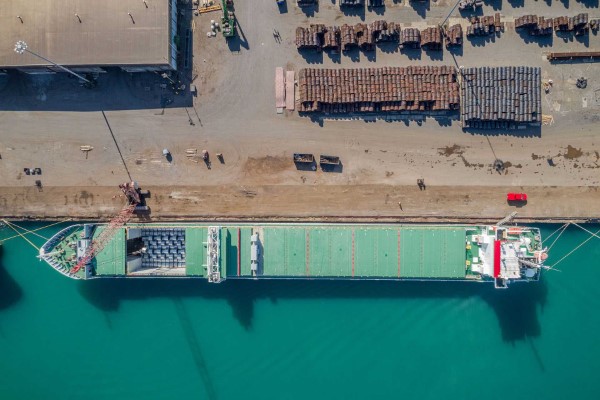Five years after the $45 billion Rebuild Illinois program was passed by the Illinois Legislature, the pace of projects is nearly as fast as the speed with which vehicles in 2023 traveled more than 103 billion miles in the state.
On highways alone in 2023, Rebuild Illinois made $13.6 billion in improvements statewide on 5,659 miles, 578 bridges and 865 additional safety projects. By the end of June 2024 the highways total had reached $16 billion and 6,541 miles.
“Here in Illinois, we’re on a mission to modernize our infrastructure and make transportation more reliable for commuters, families, and businesses,” said Governor JB Pritzker in December. The previous July, he and the Illinois Department of Transportation (IDOT) released the largest multi-year program to repair and modernize infrastructure in state history: $41 billion over six years. “Covering fiscal years 2024-2029, the multi-year program is the first time in more than a decade IDOT released a comprehensive approach to invest in all modes of transportation,” an IDOT release explained, “roads and bridges, aviation, transit, freight and passenger rail, waterways, as well as bike and pedestrian accommodations.”
More than half of those 103 billion miles traveled last year ticked by in the Chicagoland region. But a healthy percentage also comes from southern Illinois, where officials gathered recently in Marion to dedicate the patriotic $7.3 million Westminster Drive bridge over I-57. The bridge includes a 10-foot-wide pedestrian and bicycle path that connects the Crab Orchard Greenway, a 20-mile regional multi-use trail that not only gets people moving but connects them to Crab Orchard National Wildlife Refuge and John A. Logan College.
Quality of life for long-distance truckers and drivers is important too, which is why the $531.6 million investment by the Illinois and Missouri DOTs to build a new I-270 Chain of Rocks Bridge over the Mississippi River is also crucial.
“This isn’t just an investment for the Metro East region — it’s an investment for our entire nation,” Pritzker said last year. “This major freight corridor connects our ports and railways — essential to maintaining a steady supply chain for Illinoisans, Missourians and all Americans alike.”

“You can ship directly to the Gulf of Mexico and the Atlantic Ocean from Chicago. This is the only port that can do both.”
— Erik Varela, Executive Director, Illinois International Port Authority
The I-270 loop connects many of the region’s warehouses and distribution parks, ports, airports, and rail yards on both sides of the Mississippi River. “Nearly 70% of the region’s industrial tenants occupying large warehouse space in excess of 500,000 square feet are within 10 minutes of the Interstate,” the State said. A report from bistate organization St. Louis Regional Freightway released in May 2024 stated the St. Louis region had nearly 6 million sq. ft. of distribution space ready to be occupied at one of the lowest average asking rents in the entire Midwest: $5.67 per sq. ft. “Large blocks of space are built and available,” the report found, “especially in the Metro East (Southwestern Illinois), which offer immediate opportunities for absorption and growth.”
“The report emphasizes the significance of industrial sites and buildings in the freight and logistics supply chain and highlights the robust market fundamentals in the St. Louis region, along with its workforce strengths,” said Mary Lamie, executive vice president of multimodal enterprises for Bi-State Development and head of the St. Louis Regional Freightway.
That’s reason enough to update a bridge originally built 58 years ago when traffic was less than half what it is today, as the bridge accommodates 51,000 vehicles a day, 20% of them trucks. Construction is expected to be complete in 2026.
The bistate metro St. Louis region includes all six Class I railroads, five airports with capacity, four interstates and the “Ag Coast of America,” a 15-mile stretch of the Mississippi River around Cahokia, Illinois, that includes 16 barge transfer facilities. The St. Louis Regional Freightway’s 2025 Priority Projects List includes 27 projects totaling $8 billion. Other improvements to the region include light rail service to MidAmerica St. Louis Airport in Mascoutah, Illinois, a key asset for a growing aerospace and aviation sector.
Chicago’s International Port
The Illinois International Port Authority oversees nearly 2,000 acres of industrial and recreational land of Illinois International Port District, a bulk and breakbulk port created in the 1950s in the Lake Calumet area. Think steel, pig iron, cement and timber, as well as sugar, grain, lentils and rice.
In a recent conversation with Site Selection magazine’s Ron Starner, Erik Varela, executive director of the Illinois International Port Authority, said his district moves a lot of what gets distributed throughout the Great Lakes ports system and the nation’s inland river ports.
 Maritime business at the Illinois International Port District in Chicago makes a $476 million impact.
Maritime business at the Illinois International Port District in Chicago makes a $476 million impact.
Photo courtesy of IIPA
“You can ship directly to the Gulf of Mexico and the Atlantic Ocean from Chicago,” he said. “This is the only port that can do both,” with facilities that connect via Lake Michigan to the St. Lawrence Seaway and through inland rivers to the Mississippi River. The port, which welcomes vessels from all over the world, accounts for 3,250 direct and indirect jobs and around $51 million in local and state tax revenue and $57 million in federal tax revenue, he said.
All told, maritime business at the port makes a $476 million economic impact. It includes tenants such as St. Mary Cement (a subsidiary of a Colombian company), Kinder Morgan and North American Stevedore Company, the district’s largest tenant. Recent investments have come from Mount Carmel Stabilization, Maloney Lumber and Tootsie Roll Sweet Mix. Some tenants take advantage of the IIPD being in federal Foreign-Trade Zone No. 22. Most take advantage of access to all six Class I railroads and to multiple major interstate highways at the district’s doorstep.
Expansion plans by the IIPD itself include a lighting upgrade at Calumet River Terminal; using federal funds, state rail funds and city TIF dollars to upgrade the Calumet warehouse roads, electrical and sewer infrastructure; and investing $55 million to reconstruct the 3,000-ft., 113-year-old Iroquois Landing dock wall.
Varela hopes to see multiple parcels of empty land at IIPD developed in the near future.
“Most other ports along the Great Lakes do not have available land like this,” he said. And while the port district remains focused on bulk commodities, “bringing in international containers is a future opportunity for us.”

